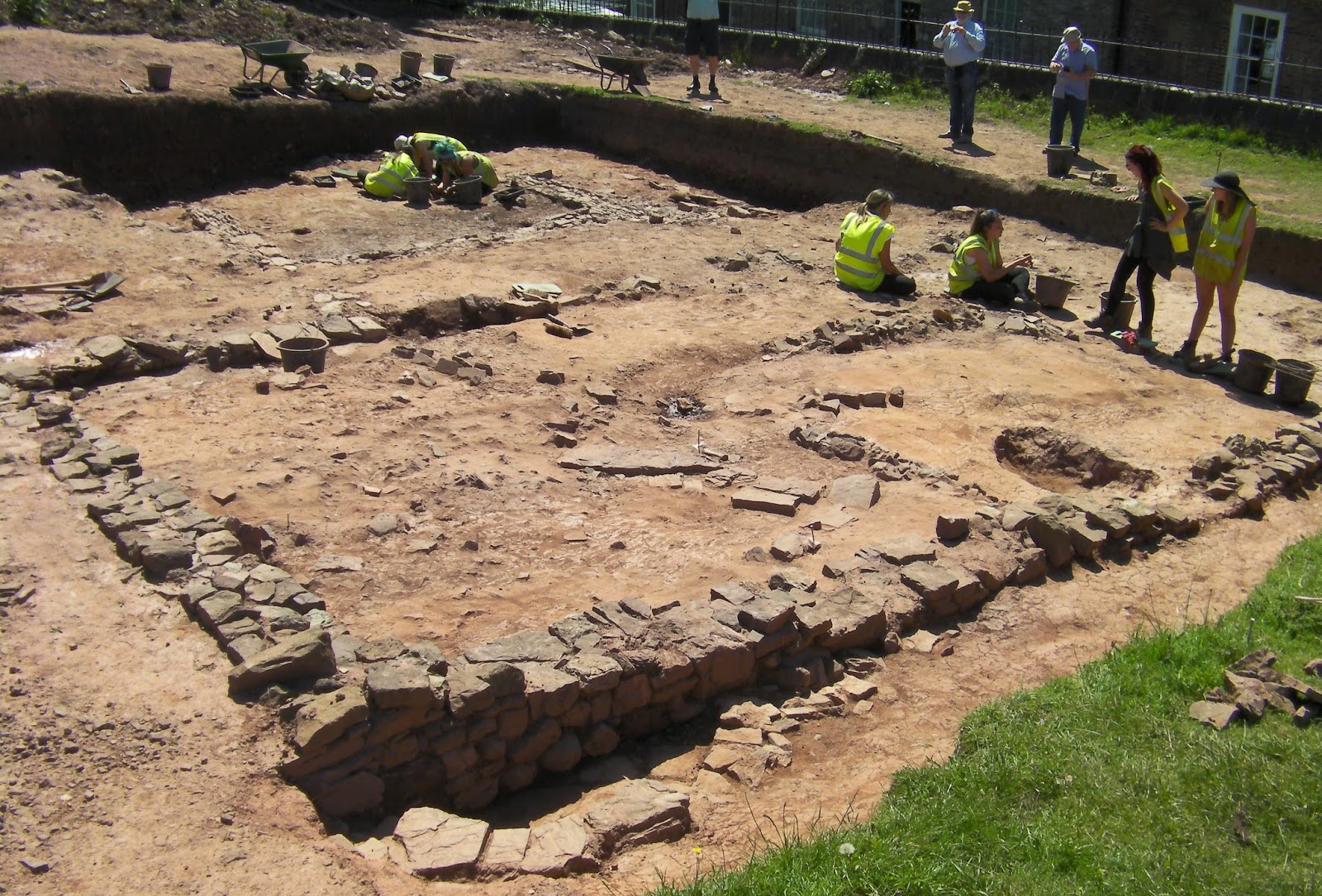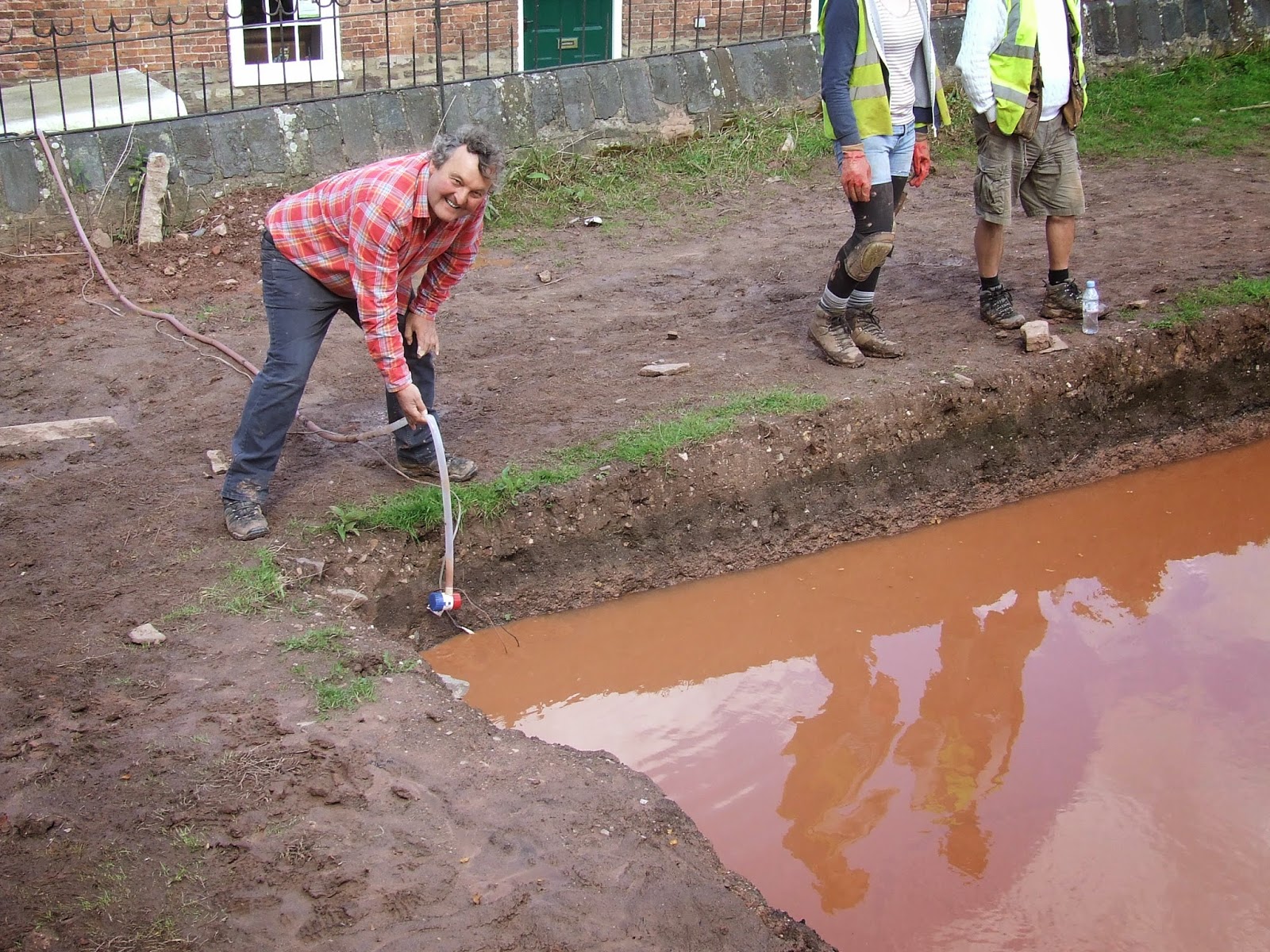Thank you, and good night!

So this is it: the end of the 2014 Berkeley season and what a year we have had. This has been a year of discoveries, re-interpretations and, as per usual - fun! High Street end of Trench 8 The main trench in the Paddock - Trench 8 has seen enormous progress on all four corners. At the High Street end of the trench we appear to have uncovered the remains of a Tudor tavern out-building. This building, along with the tavern (that we believe is somewhere under the spoil heap), appear to have been destroyed during the civil war to defend the castle from attack by creating clear lines of sight. Pits that were dug inside the out-building contained, amongst other things, industrial waste which makes us wonder whether this may have been a light industrial area attached to the tavern? We look forward to further excavating this area next year to see where this takes us and are enormously thankful to our students who have, in this space alone, moved over a tonne and a half of mort...







